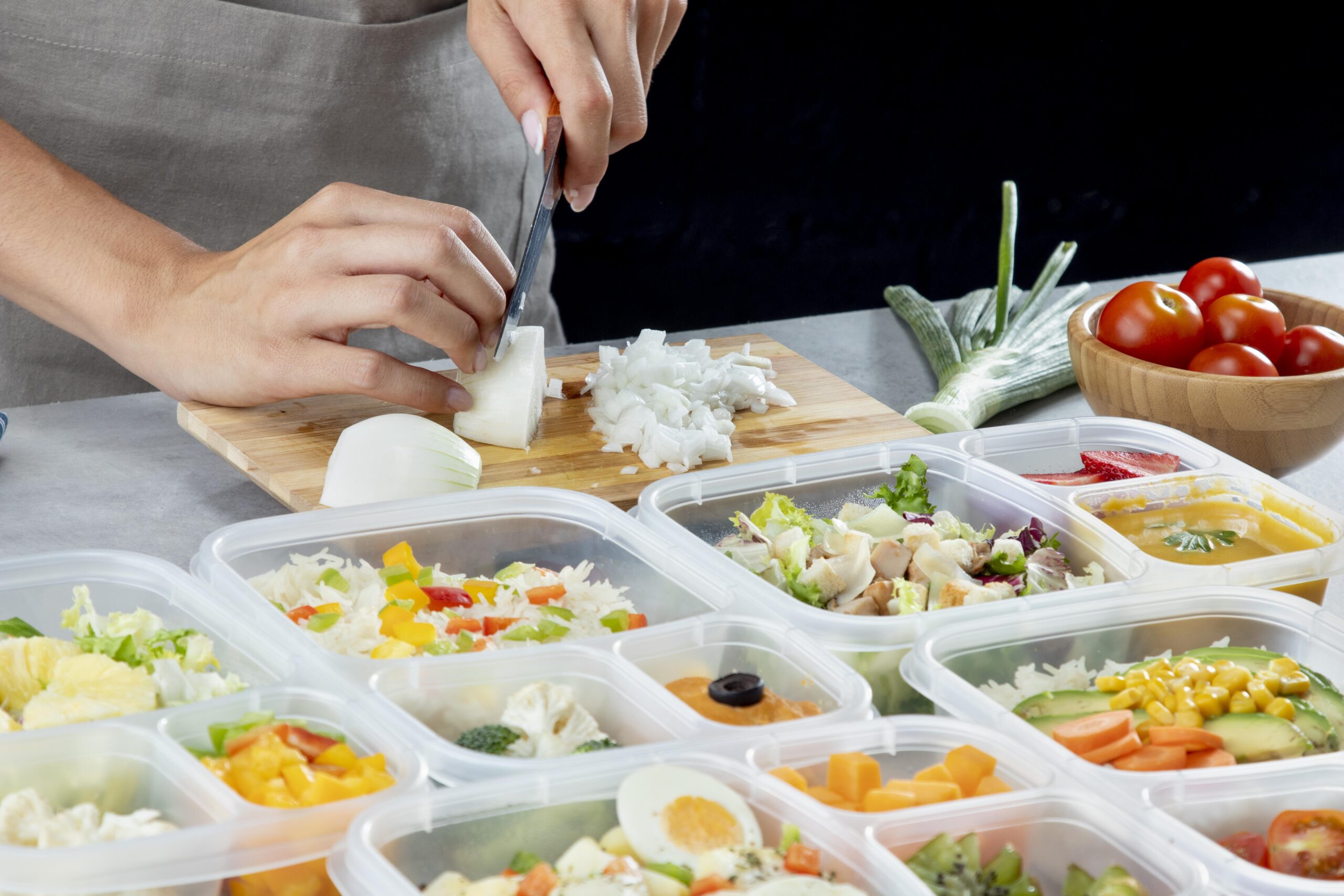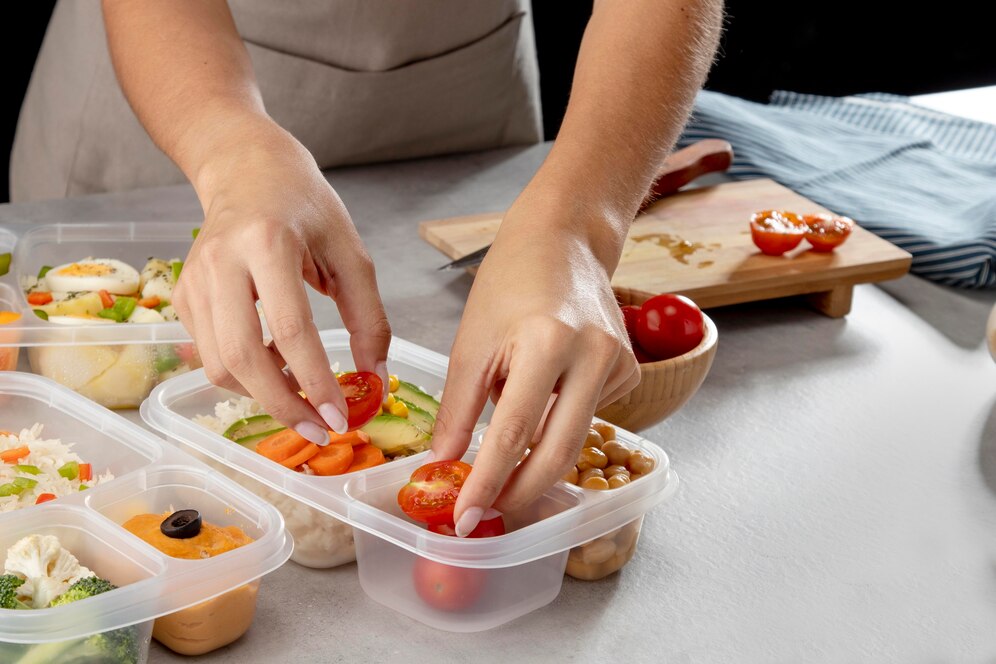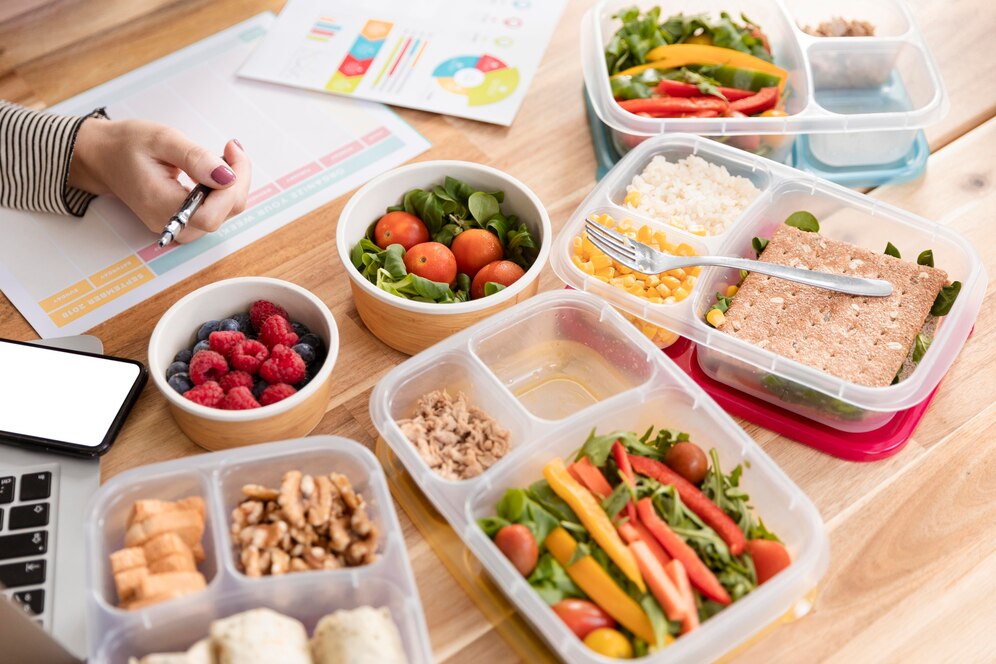How to Meal Prep for a Week of Healthy Eating
Meal prepping is your golden ticket to healthy eating and time-saving triumphs. Picture this: nutritious meals prepped in advance, effortlessly fueling your week with wellness. Dive into this guide, your compass to an easy and effective meal prep strategy, brimming with tips, scrumptious make-ahead meals, and the key steps for planning success. Spending just a

Meal prepping is your golden ticket to healthy eating and time-saving triumphs. Picture this: nutritious meals prepped in advance, effortlessly fueling your week with wellness. Dive into this guide, your compass to an easy and effective meal prep strategy, brimming with tips, scrumptious make-ahead meals, and the key steps for planning success.
Spending just a few hours each week on meal prep erases decision fatigue. Say goodbye to impulsive food choices and hello to nutrient-packed delights on your plate. Whether you’re just stepping into the world of meal prep or have seasoned expertise, this guide is your treasure trove of insights to elevate your routine.
Benefits of Meal Prepping

1. Saves Time
One of the biggest advantages of meal prepping is the significant time savings. Instead of cooking every day, you can prepare meals in bulk, reducing the amount of time spent in the kitchen during the week.
2. Supports Healthy Eating
Having healthy meals readily available makes it easier to maintain a balanced diet and avoid processed or fast food. By planning ahead, you can ensure that each meal includes the right mix of protein, fibre, and healthy fats.
3. Saves Money
Buying ingredients in bulk and cooking at home is much more cost-effective than ordering takeout or eating at restaurants regularly. Meal prepping also helps reduce food waste by using ingredients efficiently.
4. Helps with Portion Control
Pre-portioned meals prevent overeating and help maintain a balanced diet. This is particularly beneficial for those tracking their calorie intake or managing specific dietary goals.
5. Reduces Stress
With a structured meal plan in place, you don’t have to worry about last-minute meal decisions or grocery shopping multiple times a week.
Step 1: Plan Your Meals
How to Choose the Right Meals
When planning your meals for the week, keep the following in mind:
- Balance: Include a variety of proteins, complex carbohydrates, and healthy fats.
- Variety: Rotate different meals to keep things interesting and prevent food fatigue.
- Convenience: Choose recipes that are easy to prepare and store well.
Example Meal Plan for a Week
Breakfasts:
- Overnight oats with chia seeds, almond butter, and mixed berries.
- Scrambled eggs with sautéed spinach and whole-grain toast.
- Greek yoghurt with granola, nuts, and honey.
- Protein smoothie with banana, peanut butter, and oat milk.
- Avocado toast with poached egg and cherry tomatoes.
- Cottage cheese with flaxseeds and fresh fruit.
- Vegan tofu scramble with mushrooms and bell peppers.
Lunches:
- Grilled chicken with quinoa, roasted vegetables, and hummus dressing.
- Tuna salad lettuce wraps with cucumber and cherry tomatoes.
- Chickpea and vegetable stir-fry with brown rice.
- Lentil soup with whole-grain bread.
- Tempeh and roasted sweet potato bowl with tahini dressing.
- Mediterranean pasta salad with feta and olives.
- Vegan Buddha bowl with chickpeas, avocado, and kale.
Dinners:
- Baked salmon with steamed broccoli and mashed sweet potatoes.
- Stir-fried tofu with ginger garlic sauce and brown rice.
- Turkey meatballs with zucchini noodles and marinara sauce.
- Spaghetti squash with lentil Bolognese.
- Grilled shrimp tacos with avocado slaw.
- Quinoa-stuffed bell peppers with black beans and corn.
- Roasted cauliflower and chickpea curry with basmati rice.
Step 2: Grocery Shopping
Once you’ve planned your meals, the next step is to create a grocery list. Stick to fresh, high-quality ingredients and shop efficiently by organising your list by categories.
Essential Grocery List:
Proteins:
- Chicken breast
- Salmon
- Turkey mince
- Eggs
- Greek yoghurt
- Tofu/Tempeh
- Lentils and chickpeas
Carbohydrates:
- Brown rice
- Quinoa
- Whole-grain pasta
- Sweet potatoes
- Oats
Vegetables:
- Leafy greens (spinach, kale, lettuce)
- Bell peppers
- Carrots
- Cucumbers
- Tomatoes
- Avocados
Healthy Fats:
- Olive oil
- Avocado
- Nuts and seeds
- Coconut milk
Step 3: Prep Ingredients
How to Prepare Food Efficiently:
- Wash and Chop Vegetables: Pre-cutting vegetables saves time when cooking.
- Cook Grains in Bulk: Prepare quinoa, rice, or pasta in advance and store in airtight containers.
- Pre-Cook Proteins: Bake or grill chicken, boil eggs, or cook tofu in advance.
- Portion Snacks: Divide nuts, fruit, or yoghurt into grab-and-go containers.
Step 4: Assemble and Store Meals
To maintain freshness and flavour, proper storage is key.
Storage Tips:
- Use airtight containers to prevent food from spoiling.
- Store perishable meals in the fridge for 3-4 days.
- Freeze meals that won’t be eaten within a few days to maintain freshness.
Meal Storage Guidelines:
- Fridge (3-4 days): Cooked chicken, tofu, roasted vegetables, and grain-based dishes.
- Freezer (up to 3 months): Soups, stews, cooked grains, smoothie packs.
- Pantry: Dry grains, nuts, seeds, granola, and seasonings.
Step 5: Reheat and Enjoy!
When it’s time to eat, reheating your meals properly ensures they taste fresh.
Reheating Tips:
- Microwave: Reheat meals in short intervals, stirring between each.
- Oven: Warm up roasted vegetables or proteins at 180°C for 10-15 minutes.
- Stovetop: Sauté pre-cooked meals in a pan with a splash of olive oil for added flavour.
Common Meal Prep Mistakes to Avoid
1. Not Planning Properly
Failing to plan meals can lead to unhealthy choices or food waste.
2. Skipping Variety
Eating the same meal every day can get boring. Rotate recipes to keep things exciting.
3. Not Storing Food Correctly
Improper storage can lead to spoiled food. Always use airtight containers and follow refrigeration guidelines.
4. Over-Prepping
Prepping too many meals in advance can lead to food going bad. Stick to a realistic meal plan.
FAQs About Meal Prepping
1. How long can meal prepped food last in the fridge?
Meal prepped food typically lasts 3-4 days in the fridge. To extend shelf life, freeze meals that won’t be eaten within that time frame.
2. Can you freeze all meal prepped meals?
Not all meals freeze well. Meals with fresh greens or dairy (like salads or creamy sauces) can become watery or lose their texture. Stick to soups, stews, and cooked grains for freezing.
3. What containers are best for meal prepping?
Use glass or BPA-free plastic airtight containers. Glass containers are more durable and don’t absorb odours.
4. How do you avoid soggy vegetables when meal prepping?
Store vegetables separately from dressings or sauces. Add dressings just before eating to maintain crispness.
5. How can I make meal prepping faster?
- Use a slow cooker or Instant Pot to batch cook proteins.
- Opt for pre-cut veggies or frozen ingredients.
- Cook multiple meals at once using sheet pans or large skillets.
Best Meal Prepping Ideas

Meal prepping is your ticket to a hassle-free healthy diet. With thoughtful planning, savvy grocery shopping, and smart storage, you can savour fresh, nutritious meals all week long.
Begin with a straightforward plan; sprinkle in new recipes as you go. Refine your prepping skills like a master chef over time. Whether your mission is to shed pounds, sculpt muscle, or simply eat better, meal prepping is your ally in this delicious endeavour.
Dive into this week’s adventure in stress-free, nutritious eating and relish the rewards!